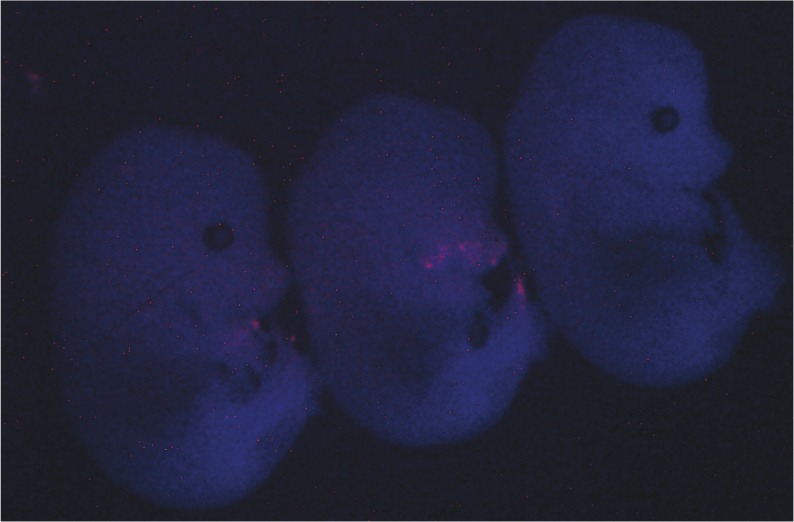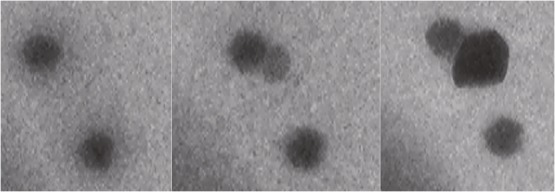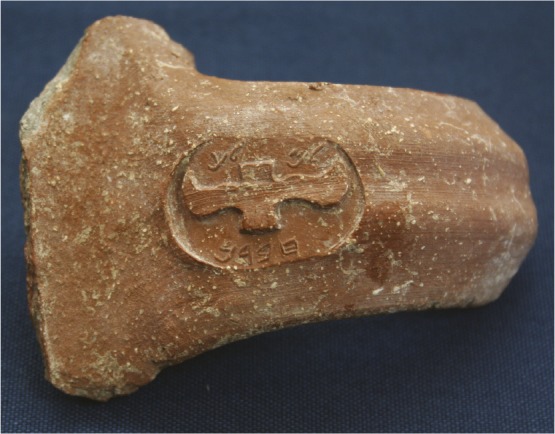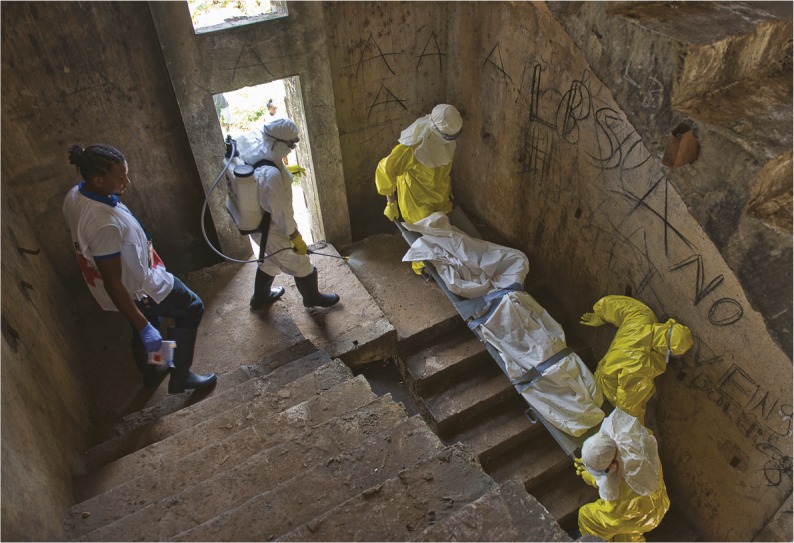Potential treatment for migraine with aura

Pregabalin as a potential treatment for migraine with aura. Image courtesy of iStockphoto/g-stockstudio.
In people who suffer from migraine with aura, splitting headaches are often preceded by cortical spreading depression (SD), a wave of neuronal excitation and prolonged depolarization that progressively renders brain tissue inactive. Studies have suggested that the epilepsy drug pregabalin might help treat migraine with aura, but the drug’s efficacy remains unestablished. Using live brain imaging, Stuart Cain et al. (pp. 2401–2406) examined the drug’s effects on mouse models of mild and severe forms of familial hemiplegic migraine (FHM1), which is caused by distinct mutations in a subunit of a voltage-gated calcium channel. SD reached the brain’s striatum and hippocampus in both forms of the disease, with the mild form displaying a delayed effect; the cerebellum was spared in wild-type and mutant mice. Pregabalin, which binds to the α2δ1 subunit of CaV2.1 calcium channels, raised the threshold of SD initiation in wild-type but not FHM1 mutant mice. Conversely, the drug slowed SD spread in FHM1 but not wild-type mice, and prevented the wave from invading the brain’s subcortical structures in the mild but not the severe form of the disease. Moreover, the drug attenuated synaptic activity in CA1 neurons in hippocampal slices from wild-type mice and mice with the mild mutation. According to the authors, pregabalin might represent a potential treatment for mild forms of FHM1 as well as noncongenital migraine. — P.N.
DNA methylation and cancer
The risk of cancer varies significantly across different body tissues, with a higher risk for colon and breast tissues than brain or bone tissues. Prior to tumor formation, normal tissues show abnormal patterns of DNA methylation—a type of epigenetic change that can affect gene activity without altering the DNA sequence. Given that aberrant DNA methylation precedes tumor development and varies across cell types, Michael Klutstein et al. (pp. 2230–2234) examined whether this epigenetic mark could explain variations in cancer risk across tissues. The authors used previously established genetic databases to collect extensive DNA methylation profiles from normal human tissues. The levels of DNA methylation in different tissues were significantly correlated with lifetime risk for different cancer types. For example, colon and breast tissues showed much higher DNA methylation levels than brain tissues. For many different cell types, DNA methylation was mostly concentrated in a small number of molecules, suggesting that this epigenetic change could mark cancer-prone cells in a population. Taken together, the findings suggest that the risk of cancer in a given tissue may be correlated with the number of abnormally methylated precancerous cells in that tissue. According to the authors, the results support the idea that genetic and epigenetic changes play critical roles in tumor biology. — J.W.
In utero detection of damaged neurons

RFP expression induced by in utero exposure to ethanol in HSE-RFP mouse embryos.
Prenatal environmental factors, including various chemical and infectious agents, can damage developing brain cells and increase the risk of psychiatric disorders. Prognostic biomarkers for the detection of prenatally damaged neurons could help prevent or treat postnatal disorders in susceptible individuals. Masaaki Torii et al. (pp. 2367–2372) developed a system based on the molecular characteristics of the Heat Shock Factor 1 (HSF1), a component of the stress-activated heat shock protein signaling pathway, for the early detection of neurons exposed to environmental and physical stress. The system binds HSF1 to a Heat Shock-response Element (HSE) that promotes the production of a red fluorescent protein (RFP) reporter to detect the cellular activation of HSF1 by environmental stress. Using wild-type mice into which the HSE-RFP system was introduced by electroporation in utero and HSE-RFP transgenic mice, the authors identified neurons affected by exposure to stress agents, such as ethanol, in primary neuronal cell cultures as well as in prenatal and postnatal animals. Furthermore, HSE-RFP expression was detectable in multiple tissues and organs throughout the body of HSE-RFP mice before and after birth. According to the authors, the reporter system might aid the treatment of environmental stress–related disorders of brain development. — C.S.
Satellite-based assessment of smallholder farms

Woman harvests maize plot in Kenya. Image courtesy of Hailey Tucker (One Acre Fund, Kenya, Africa).
Improving the agricultural productivity of smallholder farming in developing countries could help to reduce global poverty and increase food security, but difficulties in measuring the agricultural productivity of smallholder farms often hampers efforts to evaluate productivity-enhancing interventions. Marshall Burke and David Lobell (pp. 2189–2194) demonstrate how satellite imagery can be used to estimate the agricultural yield variation of smallholder farms in Africa. Using high-resolution satellite imagery and field sampling methods, the authors tracked the variation in maize productivity for more than 1,000 smallholder farms during 2014 and 2015 in western Kenya. The results indicate that corresponding estimates of maize yield from the ground-measured and satellite-derived assessments depend on the quality of field measurements tied to plot area and farm field size, in which rounding errors are reduced. Moreover, the satellite-based measurements were indistinguishable from the field-survey measurements on maize yield in response to fertilizer and the use of hybrid seeds. The findings suggest that high-resolution satellite imagery might facilitate agricultural productivity predictions that are similar to predictions generated from field survey measurements. According to the authors, using satellite-based datasets in the assessment of agricultural productivity might pave the way toward interventions that increase yield in smallholder farm systems. — C.S.
Amorphous particles and protein crystal nucleation

Nucleation of a lysozyme crystal on an amorphous particle.
Crystal nucleation and growth represent core concepts in a wide array of disciplines, but the processes that drive crystal growth and nucleation remain poorly understood. Focusing on proteins, Tomoya Yamazaki et al. (pp. 2154–2159) observed crystals of the enzyme lysozyme nucleating in situ using time-resolved liquid-cell transmission electron microscopy (TEM), a technique that produces nanoscale images of samples within a nanofabricated liquid cell. The images reveal that protein-rich mesoscopic-scale particles, previously thought to be dense liquid precursors to nucleation, do not coalesce even when in contact with one another. The authors found that these particles are amorphous solids acting as heterogeneous nucleation sites for a second noncrystalline particle—likely dense liquid—that appears less than a few seconds before the onset of crystal nucleation. Thus, two different types of amorphous particles performing different roles might facilitate lysozyme crystallization. The findings are a significant departure from current theories about crystal nucleation and demonstrate that recent technical advances in nanoscale fabrication and TEM can help precisely unravel crystal nucleation, according to the authors. — T.J.
Ancient variation in Earth’s magnetic field

Stamped jar handle from Ramat Rahel.
Information about Earth’s magnetic field in the past can be obtained from heat-impacted geological and archaeological materials, which must be accurately dated to help construct a reliable chronology. Erez Ben-Yosef et al. (pp. 2160–2165) obtained data on the geomagnetic field from a set of 67 ancient Judean ceramic jar handles from Jerusalem and its vicinity. The handles bear royal stamp impressions, permitting accurate age estimates. The authors used the data to construct a record of Earth’s magnetic field intensity from eighth to second century BCE, the period spanned by the jars. The record indicates a gradual decline in field intensity between the sixth and second centuries BCE. The record also indicates a rapid decline in field strength of more than 20% over a 30-year period in the late eighth century BCE. The latter result supports the existence of a spike in field intensity during the eighth century BCE that is not predicted by geomagnetic models. The results represent a substantial advance in knowledge of past geomagnetic field changes, according to the authors. — B.D.
Superspreading during an Ebola epidemic

Community Ebola deaths during 2014–2015 West Africa outbreak. Photo by Victor Lacken and image courtesy of International Federation of Red Cross and Red Crescent Societies.
For many infectious diseases, some infected individuals transmit the disease to a disproportionately large number of so-called offspring cases, a phenomenon known as superspreading. Superspreading has been documented for the recent Ebola epidemic, but a quantitative understanding of Ebola superspreading dynamics that could facilitate development of highly targeted control measures is lacking. Max Lau et al. (pp. 2337–2342) developed a framework for estimating the number of offspring cases generated by each infected individual, using data from the Safe and Dignified Burials program of the International Federation of Red Cross and Red Crescent Societies and collected in Sierra Leone between October 2014 and March 2015. The authors found that most infections gave rise to less than one offspring case on average, suggesting that a few superspreaders played an outsized role in sustaining the epidemic. The importance of superspreaders appeared to increase over time. A majority of infections could be traced to a small number of superspreaders, comprising 3% of all cases. People younger than 15 years and older than 45 years were the most likely to be superspreaders. According to the authors, the results illuminate the risk factors for superspreading and illustrate the importance of targeting control measures at potential superspreaders. — B.D.


